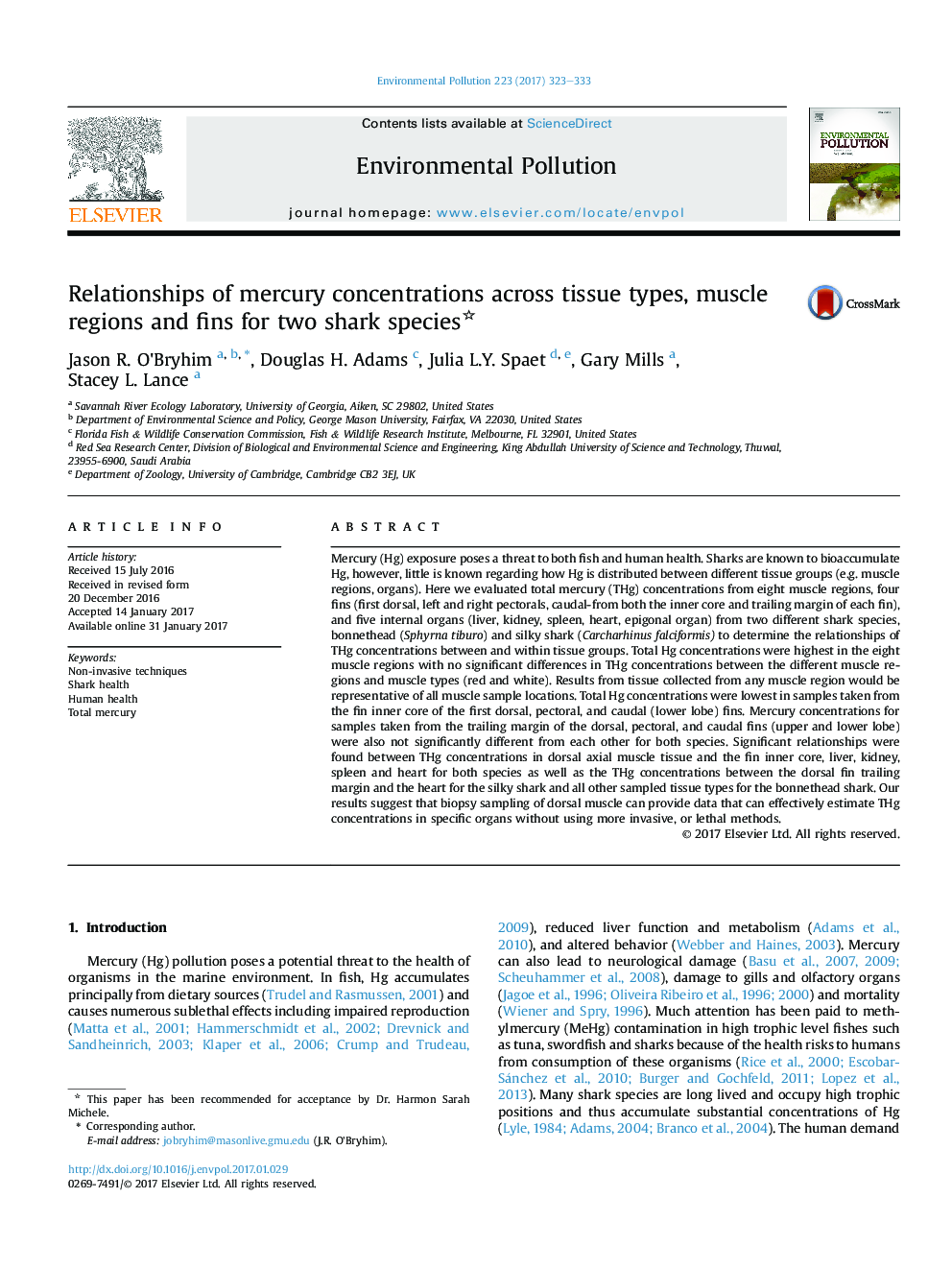| Article ID | Journal | Published Year | Pages | File Type |
|---|---|---|---|---|
| 5749312 | Environmental Pollution | 2017 | 11 Pages |
â¢Muscle tissue had the highest THg concentrations in both shark species.â¢THg concentrations did not differ among muscle regions.â¢After muscle, THg was highest in kidneys and liver.â¢THg from muscle biopsies can reliably predict THg concentrations in other tissues.
Mercury (Hg) exposure poses a threat to both fish and human health. Sharks are known to bioaccumulate Hg, however, little is known regarding how Hg is distributed between different tissue groups (e.g. muscle regions, organs). Here we evaluated total mercury (THg) concentrations from eight muscle regions, four fins (first dorsal, left and right pectorals, caudal-from both the inner core and trailing margin of each fin), and five internal organs (liver, kidney, spleen, heart, epigonal organ) from two different shark species, bonnethead (Sphyrna tiburo) and silky shark (Carcharhinus falciformis) to determine the relationships of THg concentrations between and within tissue groups. Total Hg concentrations were highest in the eight muscle regions with no significant differences in THg concentrations between the different muscle regions and muscle types (red and white). Results from tissue collected from any muscle region would be representative of all muscle sample locations. Total Hg concentrations were lowest in samples taken from the fin inner core of the first dorsal, pectoral, and caudal (lower lobe) fins. Mercury concentrations for samples taken from the trailing margin of the dorsal, pectoral, and caudal fins (upper and lower lobe) were also not significantly different from each other for both species. Significant relationships were found between THg concentrations in dorsal axial muscle tissue and the fin inner core, liver, kidney, spleen and heart for both species as well as the THg concentrations between the dorsal fin trailing margin and the heart for the silky shark and all other sampled tissue types for the bonnethead shark. Our results suggest that biopsy sampling of dorsal muscle can provide data that can effectively estimate THg concentrations in specific organs without using more invasive, or lethal methods.
Graphical abstractDownload high-res image (227KB)Download full-size image
